National Museum of Qatar
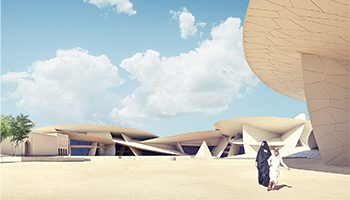
The new National Museum of Qatar brings the unique story of Qatar and its people to life, covering the earliest times to the present day and offering a vision of the future. Visitors embark on an eye-opening journey through three “chapters” — Beginnings, Life in Qatar, and The Modern History of Qatar — each presented through compelling story-telling and fully immersive environments that engage all the senses. nmoq.org.qa
Museum of Islamic Art
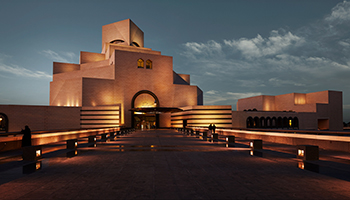
Experience 15 centuries of Islamic art in a single day. The MIA’s magnificent and imaginatively presented displays of the finest art and artefacts from across the Islamic world have earned it recognition among the world’s top cultural institutions. No visitor can fail to be impressed by the quality and diversity the collections, housed in a modern architectural masterpiece designed by the award winning architect IM Pei. The museum ensures fresh interest through its constantly changing programme of special exhibitions. A fee may be charged for these temporary shows, but admission to the permanent galleries is free. www.mia.org.qa/en
Msheireb Museums & Enrichment Centre
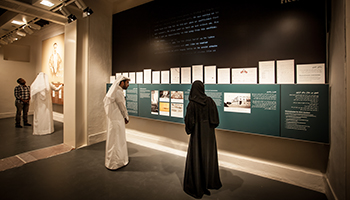
The museums celebrate the history of four historic heritage houses in the heart of Msheireb Downtown Doha, a major renovation and restoration project located in the oldest part of the capital. They provide an important insight into Qatar’s national history and social development and visitors are welcome to tour the museums at their leisure. Guided tours are also available. The associated Msheireb Enrichment Centre on the Corniche offers presentations covering the nation’s life, history and urban development past, present and future. www.msheireb.com/msheireb-enrichment-centre/about-the-centre/
Mathaf: Arab Museum of Modern Art
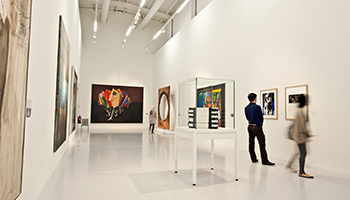
Located in Doha’s Education City, Mathaf museum is the only institution of its type in the region, hosting modern art exhibits and programmes offering an Arab perspective on contemporary art. It is linked by shuttle bus to the Museum of Islamic Art. www.mathaf.org.qa/en/
Sheikh Faisal bin Qassim Al Thani Museum
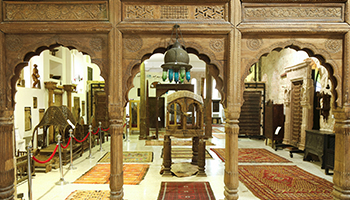
Sheikh Faisal’s private museum at Al Samriya features a fascinating collection of more than 15,000 exhibits covering a spectrum of art, artefacts and equipment, as well as many everyday household and traditional items that evoke a flavour of Qatari life in the pre-oil era. A feature of the museum is its extensive collection of vintage cars. www.fbqmuseum.org
Other Venues
The recently redeveloped Doha Fire Station is a community of studios offering residency programmes for artists. Among other venues contributing to Doha’s lively cultural scene are Al Riwaq Gallery, Qatar Museums Gallery, the Arab Postage Stamp Museum, Souq Waqif Art Center, Al Markhiya Gallery and Qatar National Library.
www.firestation.org.qa
www.qm.org.qa/en/project/qm-gallery-alriwaq
www.qm.org.qa/en/project/qm-gallery-katara
www.katara.net/en/communities/arab-postal-stamp-museum
www.facebook.com/souqwaqifartcenter
www.almarkhiyagallery.com
www.qnl.qa/en
Historic Sites
Al Wajba Fort. Situated 15 km. west of Doha, Al Wajba fort was built in the late 18th or early 19th century. Its historical importance derives from being the site of a famous battle at which the Qatari forces defeated the Ottomans in 1893, as well as being the residence of the sheikhs during various periods of its history.
Al Koot Fort (also known as Doha Fort). Built in 1927 as a police station to protect the nearby Souq Waqif and also used as a jail, the square-shaped white fort has towers – three circular and one rectangular – crowned with traditional Qatari-style battlements at each corner.
Al Jassasiya rock carvings on the north-east coast comprise a total of 874 carvings, known as ‘petroglyphs’, the earliest thought to date from Neolithic times. Discovered in 1957, they consist of various designs and patterns such as cups in rows, rosettes, ships and foot marks.
Barzan Towers.
Located in the suburbs of Doha in the village of Umm Salal Mohammed, the recently restored towers were built between 1910 and 1916. Barzan means ‘the high place’ and the towers may have served as a lookout to protect local water sources and as an observatory to determine the dates of the lunar calendar.


